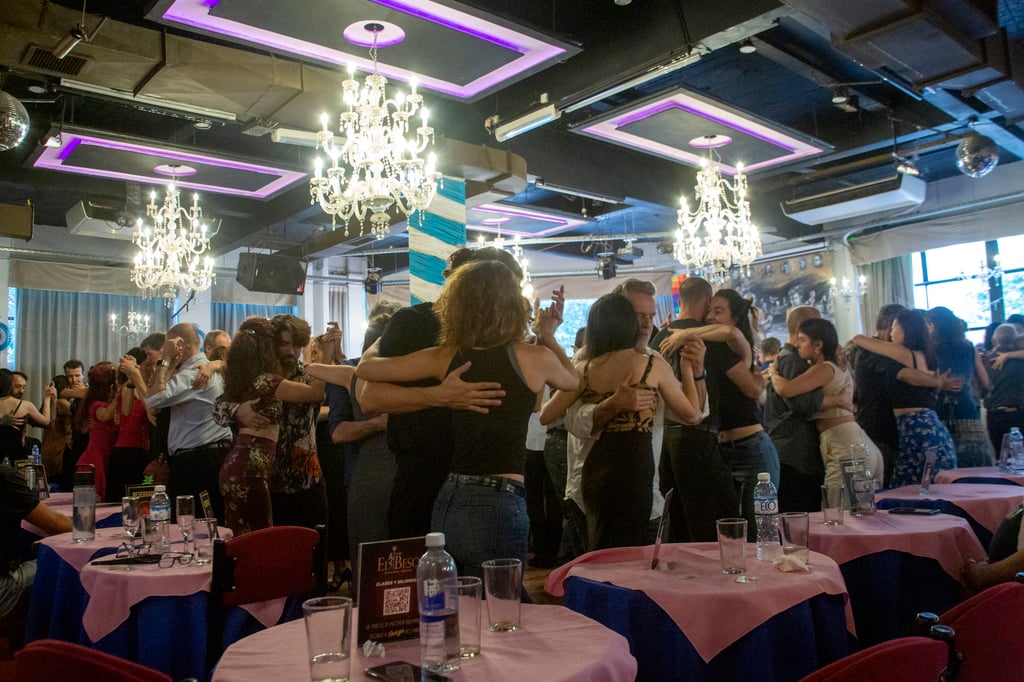Why more Asian women are flocking to Buenos Aires’ milongas for Argentine tango, beyond the tourist traps
- Women must wait for an unspoken invitation to press themselves close to a stranger for a tanda, or set of dances – but complications can result

Few visitors to Buenos Aires leave without seeing a choreographed tango show, the male performers in sharp suits, the women in slit skirts, stocking tops and towering heels. Street dancers offer to entwine themselves with passers-by, their considerable décolletage pressed close for a moment’s photo opportunity. Couples spin and tilt on handkerchief-sized stages between restaurant tables to draw in customers.
But this is a different world to that of the Argentinian capital’s milongas: social tango clubs where local people go to dance, usually into the small hours.
Strangers pair up to slide around dimly lit dance floors to the crooned sorrow of tango ballads, and the scurry of violin and bandoneon. They lose themselves in the intimate embrace vital to a largely improvised dance form, through which one party reads and responds to the other’s intentions.
Tango began in the bars and brothels favoured by marginalised immigrant communities in the late 1800s; some of its moves and lyrics were initially considered too sexually suggestive for Argentina’s middle and upper classes. Many dancers admit there is still something dark, seedy, even toxic about a milonga atmosphere, but the excitement of the tango embrace is irresistible.

Foreign tango enthusiasts, particularly women, are drawn to Buenos Aires to study with the world’s best teachers by day – and to dance on the world’s most intense tango social scene by night.
Although there’s little that is more alien to most Asian cultures than the idea that women should press their bodies against strangers in shadowy rooms at 3am, in the past decade female dancers of Chinese, Korean, Japanese and other Asian descent have begun stepping out in increasing numbers to do just that.
